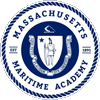History
History of the Schooner Ernestina Ex. Effie M. Morrissey
A proud heritage
The Essex Schooner
Built in four months at a cost of $16,000 and launched on February 1, 1894 at the James & Tarr shipyard in Essex MA, EFFIE M. MORRISSEY (now ERNESTINA) was owned by Captain William E. Morrissey and the John F. Wonson, Co. of Gloucester, MA. The vessel was named after Captain Morrissey’s daughter. The ship’s illustrious career began that same year, when the 156-foot-long schooner carried Gloucester fishermen to the Grand Banks, Labrador, Nova Scotia, and Newfoundland in search of cod, haddock, hake, halibut, pollock, and other species and to carry freight. (William’s son Capt. Clayton E Morrissey, who also commanded the MORRISSEY after his father, served as the model for the famous Gloucester fisherman’s statue.) more 1894-1914
The Arctic Explorer

1931 Bob Bartlett and Crew aboard the "Morrissey"
In 1926, EFFIE M. MORRISSEY was purchased by Capt. Robert A. ‘Bob’ Bartlett, a Newfoundland-born Arctic explorer and companion of Robert E. Peary. Bartlett, who navigated Peary and Matthew Henson to the North Pole in 1909, was considered the greatest ice captain of the 20th Century. Under Bartlett, “the little MORRISSEY “, along with students and scientists, made 20 regular voyages to document the frozen north’s flora and fauna, and its people for patrons including the National Geographic Society, the Smithsonian Institution, the Cleveland Museum of Natural History, the Museum of the American Indian, and others. He was the first Arctic explorer to place science ahead of exploration. In 1940, MORRISSEY reached to within 578 miles of the North Pole—the farthest north that any sailing vessel has ever reached. Pathé Newsreels shown in theaters across the country and David Putnam’s adventures for boys, David Goes to Greenland and David Goes to Baffin Land, further helped spread the name and fame of the venerable master and his schooner. Cap’n Bob and MORRISSEY, were as famous to the generations of the 1920s and 30s as Jacques Cousteau and Calypso were to the generations of the 1960s and 70s. During World War II, the ship’s black hull was painted grey and entered into U.S. Naval service conducting hydrographic work of Greenland’s waters and serving as a supply ship to U.S. bases there and in the Arctic. She even made a voyage to the Soviet Union port of Murmansk. Following Cap’n Bob’s 1946 death, the schooner was sold to two brothers in New York City who painted her white and intended to sail her to the South Seas. However, in November 1947, a fire below decks damaged MORRISSEY which sank under the steady stream of water from the New York City Fire Department. more 1926-1946
The Cape Verdean Packet
Captain Henrique Mendes purchased MORRISSEY and renamed her ERNESTINA, after his daughter, and sailed the vessel as a packet, carrying immigrants and goods to and from Cape Verde Islands and the United States from 1948 until 1965. Among her captains were Ricardo Lima Barros, Joao Baptista Jr., Arnaldo Mendes, and Valentin Lucas. Many stories from this era have been documented by ship anthropologist/crew member Traudi Coli. ERNESTINA was the last sailing ship, in regular service, to carry immigrants across the Atlantic to the United States, and the last of a series of Cape Verde packets to carry on this trade in the middle years of the 20th Century.
Until 1972, ERNESTINA was important for inter-Island transportation and communication. Between the islands the ship would be loaded with foodstuffs and supplies, and merchants usually travelled with their goods. There were also always several passengers aboard. For example, in one voyage, there were recorded eight “Americanos” going to the island of Fogo and several passengers bound for Praia, the capitol of the islands. In 1968 the Bishop of Cape Verde sent used clothes to the mission in Fogo, and in 1972 a relief supply of maize was transported to several islands. In 1972, ERNESTINA’s bottom was repaired; frames, keel sections and hull timbers were renewed and the hull was sheathed with aluminum sheeting below the waterline. She was used less and less by 1974.
Since the late 1960s, there had been growing interest in the United States in saving the historic vessel, among a diverse group of persons and organizations representing her diverse history. The combination of her rich North American history and her transatlantic heritage was and is unique. Approaches were made to acquire her for the South Street Seaport Museum and later for the Bartlett Exploration Association of Philadelphia. Henrique Mendes had always hoped that she would return with honor to the land of her birth. A Cape Verdean-American group headed by Charles Fortes and Don Ramos of Providence wrote to President Aristide Pereira of the newly independent Cape Verde about sending ERNESTINA to the United States to participate in the 1976 Bicentennial Parade of Sail. The President agreed. ERNESTINA was hauled, 40 shipwrights, welders, mechanics and riggers worked on her for 2 weeks, 7am-7pm, and one man was sent to Lisbon for new sails, and veteran seamen and students from the Mindelo Navigation School were selected for her crew. On June 11, 1976, she set sail from the port of Mindelo, captained by Marcos Lopes. Engine trouble developed about 13 miles off the coast. When the sea became stormy, they radioed the Wilma to tow her to harbor. Just as the crew was attaching the towline, the foremast cracked, falling to the sea. It was therefore necessary to cut off all the rigging, letting the new sails sink into the ocean. No one was lost or injured. That incident led to a six-year campaign to restore ERNESTINA, both here and in Cape Verde. Cape Verde spent hundreds of thousands of dollars in the restoration. The National Friends of ERNESTINA/MORRISSEY, co-led by Laura Pires-Hester and Michael Platzer and formed at the National Maritime Historical Society was joined by local Friends groups and hundreds of volunteers in Massachusetts, Connecticut, Rhode Island, New York, and Philadelphia in raising funds to support the restoration and expanding the base of support and interest. more 1947-1976
A Gift from the Republic of Cape Verde
In 1978, Cape Verde made a decision to gift the Schooner to the people of the United States. This amazing gift recognized the long-standing ties between the two countries and also acknowledged the line of similar schooners going back to the late 19th century, owned by Cape Verdeans and transporting people and cargo back and forth. Also in 1978, the original legislation creating the Schooner Ernestina Commission was passed, sponsored by legislator Thomas Lopes. In 1982, the Republic of Cape Verde restored ERNESTINA and presented her to the Commonwealth of Massachusetts as a gift to the people of the United States, returning her to the land of her construction. At the presentation ceremonies, a representative from Cape Verde called ERNESTINA “an unmistakable catalyst in fostering a very special bond of friendship and human assistance from one country to another.” (A 25th anniversary celebration of this generous gift took place on August 25, 2007 at the State Pier in New Bedford.) more 1977-1982
ERNESTINA spent the next four years undergoing additional rehabilitation that earned the vessel and her Captain, Dan Moreland, an award in 1987 from the National Trust for Historic Preservation for “outstanding commitment to excellence in historic preservation.” In 1990, the Secretary of the Interior designated ERNESTINA a National Historic Landmark and listed her as in “excellent” condition. In 1997, the U.S. Congress established New Bedford Whaling National Historical Park and included ERNESTINA as part of the park. more 1982-1990
The Maritime Educator
When ERNESTINA received U.S. Coast Guard certification in 1987, she plied the waters as a sail training ship, living history museum, and goodwill ambassador. Between 1988 and 1989, ERNESTINA visited ports up and down the eastern seaboard and northeast into Nova Scotia and Newfoundland, returning to her former homeports while educating a new generation of seafarers. From 1990 through 2004, ERNESTINA sailed regularly from spring to autumn conducting an extensive range of educational opportunities, spanning from dock side programs during port visits to day sails, and extended sails of up to two weeks in length. more 1991-2005
Many examples of Ernestina’s activity during this time can be found in the archived website.
Since 2005
In 2005, the vessel was not granted its U.S. Coast Guard certification as a small passenger and sailing school vessel due to her deteriorated stem, stern, and transom. Her inability to sail has been detrimental to the schooner’s ability to “earn her living” through grants, program, and special event fees, which had averaged approximately half of her $800,000 annual operating expenses. As a result of the loss of these funds, ERNESTINA’s program staff and crew were laid off resulting in further deferred maintenance of the vessel and the elimination of maritime and environmental science programs offered annually to more than 20,000 students, teachers, and others. In 2006, Preservation Massachusetts named the Massachusetts State Parks System to its “10 Most Endangered Historic Resources Program”, citing the schooner ERNESTINA as its prime example.
In May 2006, the Superintendent of the New Bedford Whaling National Historical Park assembled an interdisciplinary team of maritime experts during a Maritime Summit to develop preservation and operation recommendations for ERNESTINA. Participants included marine preservation specialists, educators, and executive directors from Mystic Seaport Museum (Dana Hewson), Sea Education Association (John Bullard), American Sail Training Association (Peter Mello), Lake Erie Maritime Museum (Walter Rybka), the National Park Service, Willi Bank (former Ernestina Captain) and the Massachusetts Department of Conservation and Recreation. The summit recommended that a condition survey of the vessel be undertaken. Shortly after the summit, rehabilitation of the keel, frames, and planking below the waterline at a cost of $390,000 was completed during the early fall of 2006 at DN Kelley’s Shipyard in Fairhaven, MA. It was funded by the
Hildreth/Stewart Charitable Trust with matching funds from the Massachusetts Executive Office of Environmental Affairs “Fix it Friends” program and the Massachusetts Office of Travel and Tourism. The completed work on ERNESTINA was reviewed in September 2006 by the State Historic Preservation Office and the Massachusetts Historical Commission. It was determined the work had “no adverse effect” on the significant historic characteristics of the Schooner Ernestina. All work was completed in accordance with the Secretary of the Interior’s Standard’s for Historic Vessel Preservation Projects. While the work was being carried out, Captain Paul Haley of Capt. G. W. Full Associates, a marine surveyor firm well respected for its work with historic wooden vessels, conducted the survey recommended by the Maritime Summit. The results were submitted on November 9, 2006. The report documented substantial deterioration of the midships and forward sections of the vessel due mostly to rot in the forepeak, forecastle, hold, engine room, aft cabin, lazarette, deck, and superstructure areas. In the survey, Capt. Haley concluded, “ERNESTINA has come to a critical time…Without attention to her condition that has continued over time, she will rapidly continue to deteriorate.” The survey identified the poor condition of a variety of important structural elements in the bow, stern, midships, and deck. These included, but were not limited to (beginning with most significant):
- Bow – stem, several lodging knees, section of keelson, breast hooks
- Stern – transom, rudder post, and stem
- Midships – bottom planks, lower topside planks, frames, 22 top timbers, covering boards, chain plates
- Deck – majority of deck beams, sections of bulwarks, deck beams (horizontal beams that support the deck), sections of the bulwarks (walls that run from the deck up)
One major contributor to ERNESTINA’s deterioration is her deck’s poor condition, which has for several years, allowed fresh water to enter the hull and leak down in between framing and planking and over deck beams. Fresh water, in contrast to salt water which helps preserve wood, is detrimental to a wooden vessel. As a result, ERNESTINA’s interior was exposed to constant moisture resulting in progressive rotting and deterioration within the interior of the vessel.
Schooner Ernestina Commission Reconstituted
The Commission was reconstituted in 2007 with new members appointed by the Governor and Paul Brawley was named executive director of the schooner ERNESTINA. 2007 also marked the awarding of a $500,000 challenge grant to ERNESTINA from the National Park Service’s Save America’s Treasures program. This grant was fully matched by DCR and the ship was sent in 2008 to the Boothbay Harbor Shipyard in Maine to carry out the hull repairs/restoration based on the findings of the survey carried out by Captain Paul Haley. Boothbay Harbor Shipyard repaired the bow and replaced the entire foredeck and exterior planking alongside the foredeck. The work was carried out following the standards set forth in the Secretary of the Interior’s Standard’s for Historic Vessel Preservation Projects and by the U.S. Coast Guard. The Commission hired Harold Burnham, an 11th generation master shipwright from Essex, MA to oversee the work at the shipyard.
The ship returned to New Bedford from Maine early in May 2009. The trip from Maine included port visits to Gloucester and Boston and a series of three celebratory events (“Welcome Back, Ernestina!”) to commemorate the rehabilitation, her heritage, and her iconic status as the official vessel of the Commonwealth of Massachusetts. As a result of a decline in the national and local economy and a loss in revenue to the Commonwealth, all state entities had to reduce their operating budgets in October 2009. ERNESTINA was not spared having her operating budget reduced 50% to $92,500. One consequence was the elimination of the positions of Executive Director and accountant and the closing of the Ernestina office.
The stern of the vessel was well known to be the focus of the next phase of pending repairs. However, in November 2009 a serious leak developed underwater in the stern. The leak was quickly but only temporarily fixed. A new system of high capacity pumps with a backup alarm system gave a new sense of security and warning system protection. During the past year, the ship’s carpenter has continued maintenance although with a restricted budget. DCR has responded to emergencies, such as the approach of Hurricane Earl, with additional funds for essential repairs and preparations. Volunteers represented the ship at various festivals and staffed ERNESTINA for a very successful Working Waterfront Festival.
A joint effort with the New Bedford National Whaling Historical Park and the Historical American Buildings Survey and Historic American Engineering Record HABS/HAER is underway to create a historic structures report to document the historical and architectural significance of the schooner, including historical narrative, line drawings, and photographic documentation was completed in September 2008. The final product should be available sometime in 2010 due to the extensive editing and review process. The DCR continues to seek new answers to providing access to funding which will support continued programming and maintenance. The DCR has provided a presentation to the Ernestina Commission in support of the Historic Curatorship program. In addition, the Department of Conservation and Recreation will set aside acreage in a state forest specifically for ERNESTINA to plant oak and white and yellow pine on an annual basis as a future source of lumber.
In the fall of 2010 the DCR works with the NPS on a process to document and archive ERNESTINA historical materials for their protection and preservation. This process has in part been approved by the Commission and is currently in process. In July of 2010 further budget cuts continued to limit any funding available for improved maintenance. Proposals were prepared to provide for the sealing of the mast and rigging, which is still planned to be completed prior to putting on the winter cover. The DCR is continuing to provide for support and any emergency requirements for ERNESTINA while alternative curatorships and partnerships are developed.
On December 19, 2014 a plan for the newly re-named Ernestina-Morrissey was announced at the New Bedford Whaling Museum.

The ship's name has been officially changed to Ernestina-Morrissey and new quarterboards have been installed.
A more extensive historical record is available on the pre-2005 archive site.














